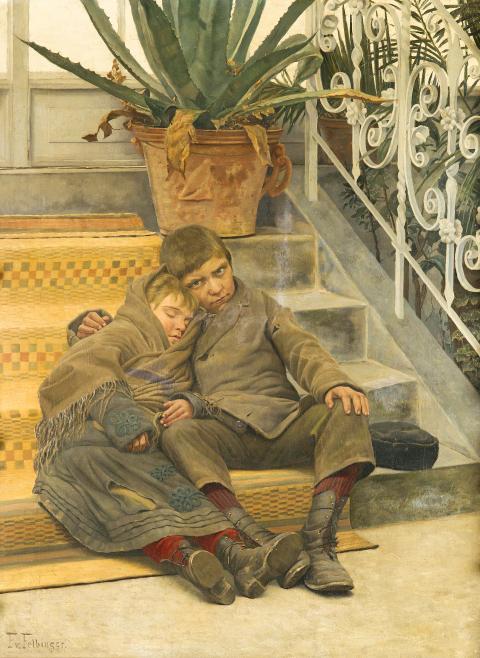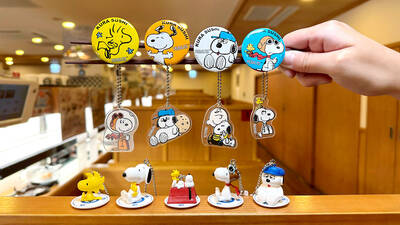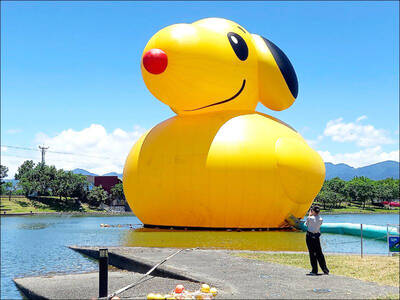Chinese Practice
改弦易轍
(gai3 xian2 yi4 che4)

Photo: Wikimedia Commons
照片:維基共享資源
change the strings, move out of the rut
我們常用成語「改弦易轍」(更換琴弦、改變車行道路)來形容改變制度、做法或態度。此成語是由「改弦」與「易轍」組成,各出自不同典故。
「改弦」出於西漢名儒董仲舒(西元前一七九~前一○四年)的〈元光元年舉賢良對策〉(收錄於《漢書.卷五六.董仲舒傳》)。董仲舒向漢武帝建議治國之道,說若樂器該換琴弦而沒換,就算是再好的樂工,也彈奏不出好的音樂;同樣地,一個國家若沒有好的制度,再賢良的國君,也無法勵精圖治。因而此成語亦可作「改弦更張」(更換琴弦,將其重新調整張設)。
「易轍」則是出自關於春秋時代外交家及政治家晏子(西元前五七八~前五○○年)的記載(收錄於唐代編纂的《意林》)。晏子治理齊國的一個地方三年來,民怨四起,齊景公便召見晏子一問究竟。晏子回答說,因為他端正社會風氣、改革不畏權貴,因此得罪了為非作歹的人和既得利益者,而招致誹謗。晏子建議齊景公要「改轍更治」——不但不要放棄改革,反而還要更徹底改變舊的道路——三年後,必定會獲得好的聲譽。
因此「改弦易轍」所意味的,是根本上的、質的改變,也就是治本,而不只是治標或看似立即見效的表面功夫。
「改弦易轍」的「轍」,意同英文的「rut」字,指地面上因重複或習慣性的通行所壓出的痕跡,通常是由車輪所造成。rut 字可能起源於一五七○年代,源於中古英語字「route」(道路)。rut 字的引申義為慣例和習慣性之行為,因已成常規而抗拒改變。正是從這個意義上說,英文有「stuck in a rut」的說法,意指陷入一種陳舊不變的常規,即便不想繼續如此,也是人在江湖,身不由己。既然「stuck in a rut」,就需要「改弦易轍」。
「stuck in a rut」一般認為可追溯至一八三九年湯馬斯‧卡萊爾的〈憲章運動〉一文,他以隱喻的方式使用了這個習語,把英國議會比喻成陷入車轍的一輛車,需要特別的努力才能夠使其向上提升、解除困境:
「議會自然而然地因循慣例,如同車子沿著重覆壓深的車轍而行,陷入庸碌的慣性而不能自拔,都深陷到車軸了,只有靠力量、洞察和勇於投注極大努力,才能夠提升任何議會或車輛。」
(台北時報林俐凱譯)
若你想改行,就早點行動,免得後來身不由己。
If you want to change your career, do it early on. You don’t want to get stuck in a rut.
我覺得我們的婚姻有點陷入困境,我們應該坐下來好好談。
I feel our marriage is in a rut. We must sit down and discuss our relationship.
英文練習
be in a rut
The Chinese idiom 改弦易轍, literally to change strings and move out of a rut, describes changing a system, methodology or approach. It consists of two parts, 改弦 and 易轍, each having its own distinct provenance.
The reference to changing strings comes from the ju xianliang duice, preserved under the Book of Han in volume 56, the Biography of Dong Zhongshu, about the Western Han Dynasty Confucian scholar Dong Zhongshu (179 – 104 BC). Dong was advising Emperor Wu on governance, which he compared to playing a musical instrument. If, he said, the strings needed to be changed but you neglected to do so, you would not be able to play beautiful music, no matter how good a musician you were. In the same way, if a state had a poor system of governance, the ruler would not be not be able to govern, no matter how wise he might be. This gives us another idiom, 改弦更張, literally to change the strings and restring the bow.
The reference to ruts is attributed to the Spring and Autumn period diplomat and government minister Yanzi (578 – 500 BC), as recorded in the Tang Dynasty compilation yilin. Yanzi was summoned by Duke Jing of the state of Qi when the people of the area in Qi that Yanzi governed became angered by his reformist policies. Yanzi defended himself, saying that the reforms he was introducing were infuriating people in power and those with vested interests, who were attempting to turn people against him by spreading lies and slander. Yanzi advised the duke to 改轍更治: To not only continue with the reforms, but also to make big changes to the direction the state was going in – to get it out of the rut it is in – promising that, in three more years, criticisms would turn into praise.
As a result, the idiom 改弦易轍 has come to refer to making fundamental, substantive changes that strike at the heart of a problem, and not just focusing on superficial interventions.
The final character in the idiom is 轍, the English word for which is “rut,” meaning a track worn into the ground by repeated or habitual passage. The word “rut” possibly originates in the 1570s, deriving from the Middle English word “route” (road). By extension, rut has taken on the meaning of a monotonous routine or habitual practice that has become convention and resistant to change. It is from this meaning that we get the English idiom “stuck in a rut”: To become entrenched in a practice that is taking one in a direction one no longer wants to go. In this, it describes the problem, whereas the Chinese idiom suggests a solution.
The idiom is thought to date back to 1839, when Thomas Carlyle used it in a metaphorical sense in his essay Chartism, comparing the British Parliament with a vehicle stuck in a rut, both of which required strength and exertion to be lifted out:
“How Parliaments travel so naturally in their deep-rutted routine, common-place worn into ruts axle-deep, from which only strength, insight and courageous generous exertion can lift any Parliament or vehicle.”
(Paul Cooper, Taipei Times)
? Today I was flagged up for being late too many times, and as soon as I get home I’m met with chaos. That’s it. Things are going to have to change. It’s time to do something about it.
(遲到太多次今天又被記了過,回到家一開門只見滿屋子髒亂,我下定決心,該是改弦易轍、力圖振作的時候了。)
The wealth gap is a structural problem, and there needs to be substantive change to the system. We need to push on with the reforms if we are going to solve the problem.
(貧富不均是結構性的問題,只有在制度面上改弦更張、持續推動改革政策,方能有效解決。)

A: The news says comic superstar Snoopy’s birthday is coming soon on Aug. 10. B: So he’s a Leo, and his birthday will fall on this Sunday. A: Cartoonist Charles Schulz created the comic strip Peanuts, featuring Snoopy, in 1950. And this year marks the character’s 75th anniversary. B: No wonder there are some big celebrations in Japan, Hong Kong and elsewhere. How about Taiwan? A: The “How Do You Do, Snoopy?” exhibition is taking place in Taipei. Let’s go to Shin Kong Mitsukoshi Department Store’s A11 branch to see the show. A: 新聞說,卡通巨星史努比的生日是8月10日耶。 B: 原來史努比是獅子座,本週日就是他的生日。 A: 漫畫家查爾斯舒茲1950年在《花生》漫畫創造了該角色,今年正好歡慶75週年! B:

A: Apart from the “How Do You Do, Snoopy?” exhibition, the Penghu International Fireworks Festival displayed some Snoopy-themed balloon installation art. B: The Yilan International Children’s Folklore & Folkgame Festival also displayed a giant rubber “Snoopy Duck.” A: And Starbucks, Kura Sushi and 7-Eleven are all selling Snoopy-themed products. B: Starlux Airlines even launched new Snoopy-themed flights recently. Isn’t that cool? A: Taiwanese love Snoopy so much. Happy 75th birthday, Snoopy. A: 除了《How Do You Do, Snoopy?花生漫畫75週年特展》,澎湖海上花火節展出了史努比氣球裝置藝術。 B: 而宜蘭國際童玩藝術節,則展出了巨型「史努比鴨」。 A: 星巴克、藏壽司、7-Eleven也推出了史努比聯名商品。 B: 星宇航空今年更推出全新「Snoopy主題航班」,很酷吧? A: 台灣人好愛史努比啊,75歲生日快樂!

Whale sharks are the largest species of fish in the world. They aren’t related to whales, but take their name due to their enormous size. At full maturity, whale sharks measure around nine or 10 meters long and can weigh from 15,000 to 40,000 kilograms. Whale sharks live in warm waters, with about 75% of them found in the Indo-Pacific region. They can migrate thousands of kilometers to different feeding grounds, but at a slow speed of 5 km/h on average. Whale sharks have a broad, flat head and are typically brown or gray in color. Their distinguishing characteristic

Continued from yesterday(延續自昨日) https://www.taipeitimes.com/News/lang Whale shark reproduction has long been a mystery for scientists. However, a significant discovery in 1995 off the eastern coast of Taiwan provided valuable insights. Researchers examined a pregnant female of the species and found over 300 embryos inside her body, ranging from about 40 to 60 cm in length. This discovery revealed that whale sharks are ovoviviparous. Instead of laying eggs in the ocean, the mother carries them internally until they hatch, giving birth to fully developed live young. Since the eggs don’t hatch all at once, embryos at different stages of development can all exist within